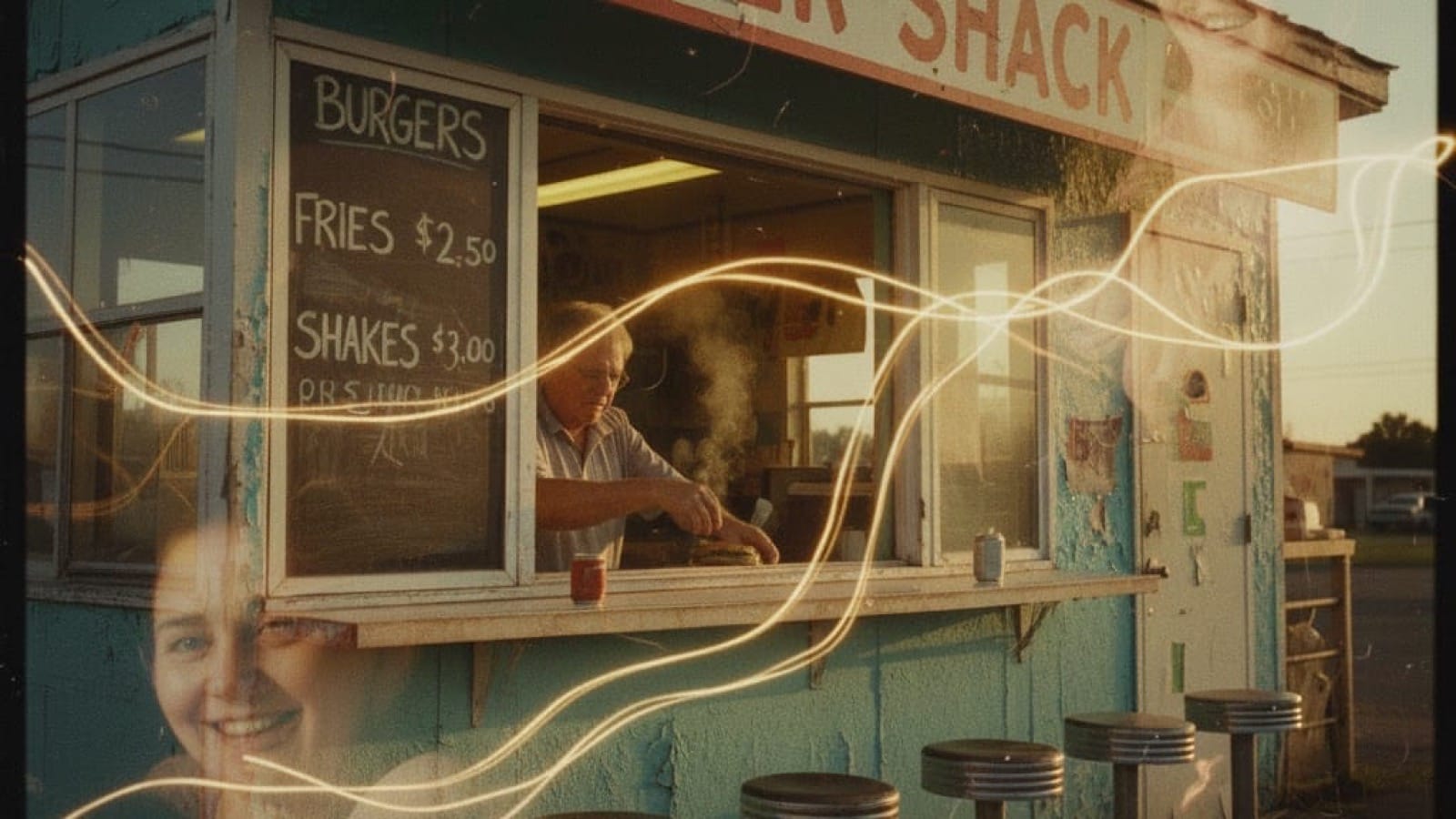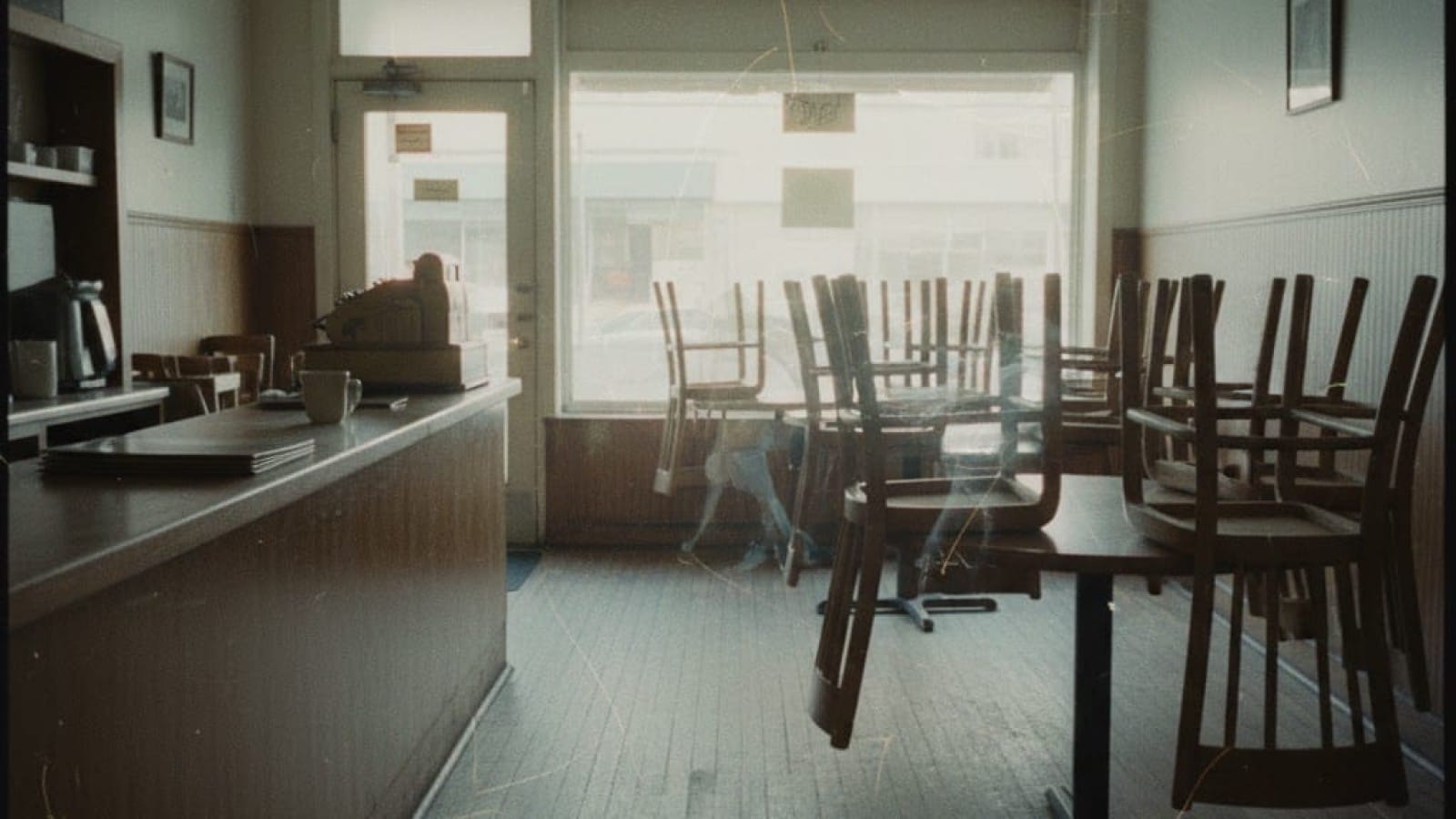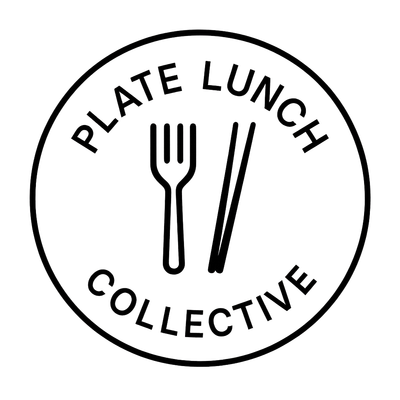Stop Competing on Price: Why Authentic Brand Stories Beat Algorithm Hacks

Shadowbanned. Stuck in 300-view jail. Algorithm murdered your reach overnight.
Every business owner has a reason their social media or digital content performs badly. I know why mine does: I'm too busy chasing data and serving clients to write these crazy long observational essays. And there's no shortage of theories about what I should be doing: post at 3:47pm on Tuesdays, use 7-9 hashtags but not 10, dance for the algorithm, pray to the TikTok gods. Best practices fall in and out of favor with each update, and the experts keep moving the goalposts.
It's worse than fitness advice.
But none of those guides touch on the actual human element. It's always an upsell or a tool. If you're not putting your own unique voice out there, you're just competing against everyone else on price. And being real works.
A client from Canada was leaning hard into an identity that didn't quite fit the content he was putting out. The content itself was good. Well-scripted, authentic delivery, but his branding consistency wasn't there. The way his bio framed the content put viewers in the wrong headspace. Instead of coming across as himself, he read as a trust fund kid. He's in his mid-40s. For lack of a better term, a douchey pick-me guy.
This wasn't subtle. It showed up in the comments. It showed up in rejection notices from advertisers.
Once we reframed his bio to match who he actually was, so the content was viewed through the right frame, his story, the comments softened. Engagement increased. Advertisers were willing to make placements.
A simple audit of brand consistency could have saved him years of work.
Does a cheeseburger taste better if it comes with a backstory?
They say smell is the strongest trigger for memories. But for food, I think it's the backstory. My grandmother was always in the kitchen. Never had measuring cups, but her hands, strong, hewn by tending cattle and vegetable gardens, by canning and freezing, knew just how many handfuls equaled a cup. An eyeball knew just how much sugar the recipe needed. She was one of the last households in a rural part of California to get electricity. She was an outwardly tough woman who would often cry because she laughed so hard, and she took great care of those she loved.
So to me, when a restaurant has a legacy backstory or one foot still deeply rooted in the past, the food does taste better.
And I'm not alone in feeling that way.
Shige's Saimin Stand gets this. Decades-old restaurant tucked away in a tiny strip mall in Wahiawa, Hawaii, 20 miles northwest of Honolulu.
According to Yelp elites, it has the best cheeseburger in the United States.
They don't have the biggest marketing budget or the flashiest Instagram presence. Their SEO strategy is nonexistent. But they have the best cheeseburger.
Shige's is family-run. It's one of the few saimin stands left in Hawaii. They serve cheeseburgers under $10. Three versions. Regular with a juicy beef patty, ketchup, and mayo. Deluxe with added onions and tomato. Double burger with an extra patty. They're best known for house-made saimin noodles, a popular Hawaii dish, but the cheeseburger is among the most-ordered items if you judge by social media posts.
They weren't chasing algorithms. And people didn't just eat there. They shared the story. User-generated content. Yelp reviews calling it the best burger on the planet. Social media posts. Press coverage. Earlier this year, Honolulu Magazine ranked it the best saimin restaurant in Oahu and noted that Shige's is among the few saimin stands left on Oahu, or anywhere in Hawaii.

Why Your Social Media Isn't Working (It's Not Just the Algorithm)
The brands that break through aren't following a checklist. They go viral. They get millions of people talking about them. They build loyal followings. And they're all telling a story that people identify with, relate to, or want to be part of. With a great story, you get to live in someone's head rent free.
A good brand story can increase what people think your product is worth by over 2,700%. Stories get 22 times more engagement than traditional ads. People are 55% more likely to buy from brands whose story they connect with. These aren't feel-good marketing platitudes. These are numbers from research between 2020 and 2025, pulled from marketing firms, academic studies, and industry reports.
When Easy Street Burgers, a small food stand, got a glowing review from a food critic, the viral video garnered almost 13 million views. That led to a massive surge in customers and brand recognition. Not from paid ads. From a story people wanted to share.
The Dove Real Beauty Sketches campaign focused on a powerful emotional story and became the most viral ad video ever. 114 million views in one month. 3.74 million shares. Because it wasn't selling soap. It was telling a story about how women see themselves.
| Engagement Metric | Impact of Storytelling |
|---|---|
| Social Media Engagement | Up to 300% increase with data-driven stories |
| Branded Story Engagement | 22 times more engaging than traditional ads |
| UGC Campaign Engagement | 50% increase in engagement |
| Employee-Shared Content | 8 times more engagement than brand channels |
User-generated content, the kind that comes from authentic experiences people want to share, gets 50% more engagement than branded content. And 93% of consumers find UGC helpful when making purchasing decisions. That content doesn't come from algorithm hacks. It comes from giving people a story worth retelling.
| Loyalty & Recall Metric | Impact of Storytelling |
|---|---|
| Brand Recall | 22x more likely to remember facts in a story |
| Customer Loyalty | 20% increase for brands with compelling stories |
| Purchase Consideration | 55% more likely to consider buying from a brand with a good story |
| Donor Retention (Non-profits) | 45% retention with storytelling vs. 27% without |
Legacy brands like Coach and Stanley have stayed relevant by blending their heritage with innovation, keeping one foot in their past while moving forward.
The algorithm chase is exhausting because you're optimizing the wrong thing. You're trying to game discovery when you should be building something worth discovering.
How to Stop Competing on Price: The Brand Story Framework
The work most businesses skip because they're too busy chasing the next best practice.
1. Figure out how you actually sound
Before you can tell your story, you need to know how you tell it. Your way. Not the industry's way, not your competitors' way.
My Canadian client's content was good. His delivery was authentic. But the frame was wrong. The voice in his bio didn't match the voice in his videos. That misalignment cost him years of work and countless opportunities with advertisers.
Developing your brand voice means sounding like you. Every time. Everywhere. 86% of consumers cite authenticity as a key factor in their purchasing decisions.
2. Know what your story actually is
Your origin story. Your why. Your difference. This is what creates the 2,700% value increase.
Shige's Saimin Stand didn't need to manufacture a story. They had one. Decades-old family restaurant. One of the few saimin stands left in Hawaii. That story was already there. It just needed to be told consistently.
But here's the thing. Most businesses have a story. They just haven't put it into words that land with people. They haven't figured out which parts of their story actually matter to the people they're trying to reach. They haven't written it down in a way that works everywhere.
That's what brand storytelling and message development does. It figures out what your story is, why it matters, and how to tell it so people want to be part of it.
3. Make sure AI can find and tell your story
Your story needs to be written down and organized so AI can understand it. ChatGPT, Perplexity, Google's AI Overviews. These platforms are changing how people discover brands. But AI can't create your story. It can only amplify an authentic one.
Creating AI-ready content means taking your authentic story and putting it in a format AI can understand, reference, and recommend. When someone asks an AI assistant for recommendations in your category, you want your story to be the one that gets told.
4. Tell it where people actually are
A great story told on the wrong platform is wasted effort.
Where does your audience actually discover new brands? What channels are they using? How do they prefer to consume content? Are you set up to capture user-generated content when it happens?
UGC campaigns see 50% increases in engagement. But that only works if you're set up to capture it. If you're telling your story on platforms where your audience isn't listening, all the authenticity in the world won't matter.
The Bottom Line
SEO and GEO fundamentals still matter. Posting schedules, hashtag strategies, platform best practices. None of that goes away. They're table stakes. The price of entry. Not the reason people remember you.
What separates viral brands from invisible ones? Having a story worth sharing.
Shige's Saimin Stand didn't hire an SEO agency. They didn't dance for the algorithm. They just kept making great saimin and cheeseburgers the way they always have. The story told itself. The discovery followed. People ate there, loved it, and shared it because they wanted to be part of something real.
My grandmother never measured a cup of flour in her life. But I can still remember her recipe for lazy peach cobbler. Me picking the peaches from her orchard from it and sitting at the kitchen table playing cards with her while we ate it.
The algorithm will change again next Tuesday. It always does. Your competitors will chase the next best practice, the next tool, the next guarantee.
But your story? That doesn't change. And if it's authentic, if it's real, if it gives people something to identify with or relate to or want to be part of, you get to live in their head rent free.
References
- Hamby, A., Brinberg, D., & Daniloski, K. (2019). "It's about our values: How founder's stories influence brand authenticity." Psychology & Marketing, 36(11), 1014-1026. https://doi.org/10.1002/mar.21252
- LeapMesh. (2024). Storytelling Marketing Statistics. https://leapmesh.com/storytelling-marketing-statistics/
- Shapo.io. (2025). Branding Statistics. https://shapo.io/blog/branding-statistics/
- InBeat Agency. (2025). UGC Statistics. https://inbeat.agency/blog/ugc-statistics
- The Brand Shop. (2025). Brand Storytelling Statistics and Trends. https://www.blog.thebrandshopbw.com/brand-storytelling-statistics-and-trends/
- Marketing LTB. (2025). Storytelling Statistics 2025: 94+ Stats & Insights. https://marketingltb.com/blog/statistics/storytelling-statistics/
- Empathy First Media. (2025). 13 Viral Marketing Campaigns That Made Millions In 2025. https://empathyfirstmedia.com/13-viral-marketing-campaigns-2025/
- Frank, C. (2024). "What Happens When A Restaurant Goes Viral?" Forbes. https://www.forbes.com/sites/chelseafrank/2024/08/09/what-happens-when-a-restaurant-goes-viral/
- Boston Brand Media. (2025). Iconic Brand Stories: How Legacy Names Stay Relevant in 2025. https://www.bostonbrandmedia.com/news/iconic-brand-stories-how-legacy-names-stay-relevant-in-2025
- SFGATE. (2024). "Old-school Hawaii restaurant has the best cheeseburger in the U.S., says Yelp." https://www.sfgate.com/hawaii/article/shiges-saimin-stand-best-cheeseburger-yelp-19752163.php


Member discussion